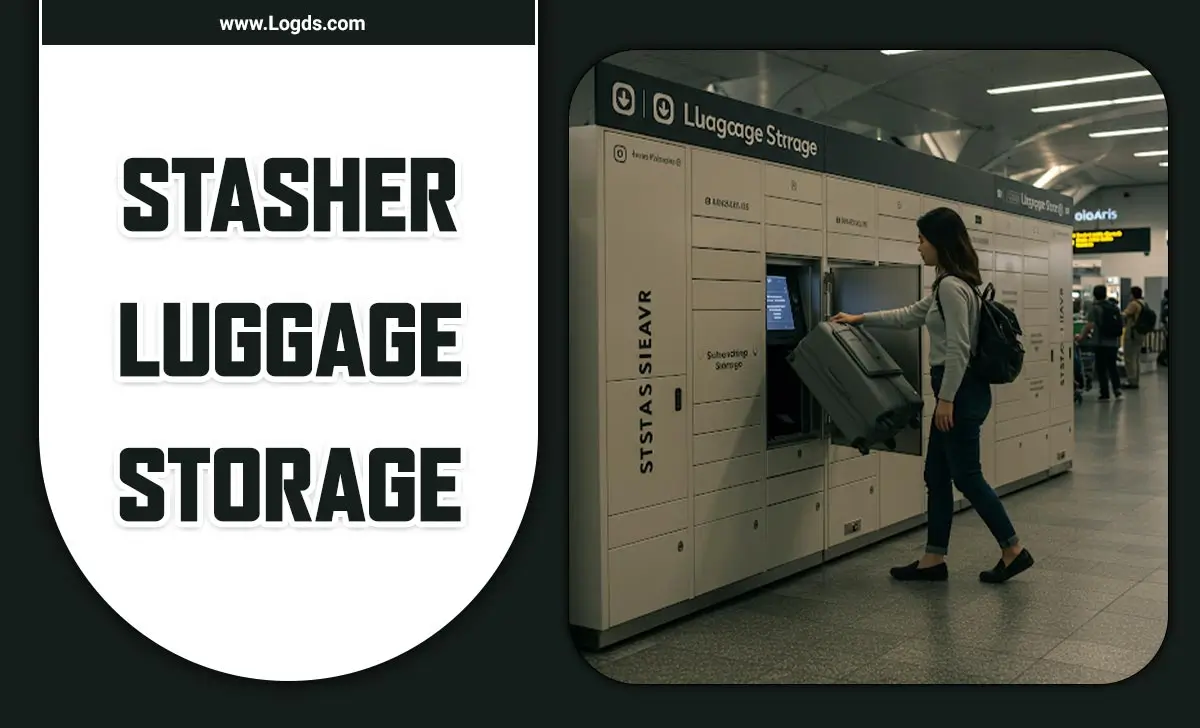Have you ever rushed to pack your suitcase, only to find it won’t fit in the plane’s overhead bin? You’re not alone. Many travelers face this puzzle about the size for carry-on luggage. Airlines have different rules, and it’s easy to mix them up. Ever heard about someone who had to check their bag last minute? It’s not fun and can cause delays.
Did you know that some bags were made specifically to fit in tiny spaces? Imagine squeezing a big teddy bear into a small box. Not easy, right? Airlines want your bags to be like that bear; snug but not squished. But why do they care so much? It’s simple: space. Planes have limited room, and everyone wants their stuff close by. Makes sense, right?
So, what’s the perfect size for your carry-on luggage? It’s like playing a fun game, finding that magic number. Once you know, you can pack without worry. Curious to learn more tips? Let’s dive in and make packing a breeze!
Choosing The Right Size For Carry-On Luggage

Understanding the Perfect Size for Carry On Luggage
Ever found yourself puzzled by airport rules on luggage? Knowing the right size for carry on luggage can save you from stressful situations. Most airlines agree on a size limit: 22 x 14 x 9 inches. This ensures your bags fit in overhead compartments. Surprised? It gets tricky—some airlines have their own rules. Want a smooth journey? Use versatile, compact bags that easily adapt. Imagine fitting your essentials while breezing through security. Adventure awaits, minus the extra baggage!
Factors to Consider When Selecting Carry On Luggage Size
Trip duration and packing needs. Personal comfort and ease of transportation.
Choosing the right size for carry on luggage can make a trip much simpler and more enjoyable. How long will your trip be? Longer trips mean you might need more clothes and items. Will you need easy access to your belongings, or do you prefer a compact bag to fit in tight spaces? Comfort also matters. Will you be taking long walks with your bag? Opting for a lightweight option can help. Consider how much you can carry comfortably.
What is the ideal carry on luggage size for most trips?
Most airlines allow a carry-on size of 22 x 14 x 9 inches. This usually fits overhead bins safely. This size covers many trips. It’s compact but can hold essentials. Always check your airline’s specific rules since they can differ.
Think about what you truly need before packing. A smaller bag lets you travel flexibly and lightly. You gain time by skipping the wait for checked bags. Remember, a carefully chosen carry-on size makes journeys smoother and more pleasant.
Common Mistakes When Evaluating Carry On Luggage Size
Misinterpreting airline requirements. Ignoring weight restrictions alongside size limits.
Travelers often slip up with carry on sizes. What happens when you don’t check airline rules? You might board with a bag that’s too big.
- Misreading rules: Airlines differ. Read their websites for size limits.
- Ignoring weight: It’s not just size. Bags must be light too. Check both before flying.
What is the standard size for carry on luggage in the US?
The standard size for carry on in the US is 22 x 14 x 9 inches. Each airline can have its own limits. Always check before your flight.
Why do airlines have weight limits for carry on bags?
Weight limits are for passenger safety and comfort. Heavy bags can cause accidents and slow boarding. Keep your bag under the weight limit to avoid issues.
Top Features to Look for in Carry On Luggage
Expandable compartments and multidirectional wheels. Builtin charging ports and secure locks.
The magic of carry-on luggage lies in its features! Imagine bag compartments that expand like your belly after Thanksgiving—the perfect fit for surprise souvenirs. Then there are multidirectional wheels, which can make your bag glide smoother than a professional ice skater. Don’t forget built-in charging ports; they’re the USB fairy godmothers keeping your gadgets alive. Finally, secure locks ensure everything stays safe because you don’t want anyone borrowing your underwear! These features turn travel chaos into a calm experience.
| Feature | Benefit |
|---|---|
| Expandable Compartments | Maximize storage for extra items |
| Multidirectional Wheels | Glide smoothly in any direction |
| Built-in Charging Ports | Charge devices on the go |
| Secure Locks | Protect your belongings |
Optimizing Space Within Carry On Luggage
Effective packing techniques. The use of packing cubes and compression bags.
Packing smart can save space. Start with packing cubes. They keep clothes neat and separated. Pack shirts in one, pants in another. This way, it’s easy to find things. Compression bags help too. They squish air out of clothes. This makes room for more stuff. Roll clothes tight and use the bags. It keeps luggage organized.
- Limit shoes to two pairs
- Use socks for extra space
- Choose travel-sized toiletries
### What is the best way to pack a carry-on? Rolling clothes instead of folding saves space. Use small items to fill gaps. This way, you use every inch smartly. ### How can packing cubes help? Packing cubes keep everything tidy and easy to find. They help sort different clothing types. Using them is like having drawers in your suitcase.
Understanding International vs. Domestic Carry On Standards
Key differences in size and weight allowances. Tips for frequent international travelers.
Traveling with carry-on luggage can be an adventure. But did you know that not all carry-ons are created equal? Imagine wearing shoes that are too big or small; that’s how your luggage feels when the size or weight isn’t right! International flights might allow a slightly smaller bag compared to domestic ones. Here’s a quick guide:
| Region | Size (cm) | Weight (kg) |
|---|---|---|
| International | 55 x 40 x 20 | 7-10 |
| Domestic | 56 x 45 x 25 | Up to 23 |
For frequent flyers, measuring your bag before packing is smart. Some airlines have sneaky rules that change like the weather! To keep your trip smooth, always check and double-check their website or ask at the counter. The best advice for a seamless travel experience is: “A traveler well-packed is a traveler unstressed!” Keep calm and carry-on correctly!
The Role of Style and Design in Carry On Luggage Size
Balancing fashion with functional requirements. Ideal materials for versatility and durability.
Finding the right balance between style and function in a carry-on bag can be tricky. Style is important, but the size should fit airline rules. Durable materials like leather or nylon help bags last long. These materials offer both strength and flexibility. They also come in many colors and designs, making it easy to stay fashionable while traveling. Why not have the best of both worlds?
Why is a durable material important for carry-on luggage?
Durable materials protect your belongings during travel. They keep your bag looking nice, even after many trips. So, choosing strong materials saves you money in the long run. Think of durability as a wise travel investment.
How to Measure Your Carry On Luggage for Compliance
Stepbystep guide to accurately gauge size. Tools and tips for ensuring measurements are within limits.
So, you’re planning a trip and need your suitcase to go cufflinks and not handcuffs? Let’s size up your carry-on! First, grab a tape measure. Measure height, width, and depth, including wheels and handles. Keep centimeters or inches in mind—no one wants hold-ups except socks!
To ensure yours flies with ease, follow this simple table:
| Dimension | Airline Limit |
|---|---|
| Height | 22 inches |
| Width | 14 inches |
| Depth | 9 inches |
If numbers aren’t your thing, imagine a wild watermelon fitting in your suitcase. If the watermelon fits, so will your luggage! Most airlines love if your bag doesn’t resemble a potato too bloated for the oven. Keep these steps in mind, and your suitcase will glide past security!
Conclusion
Choosing the right size for carry-on luggage is important. It helps avoid extra fees and ensures hassle-free travel. Remember, most airlines allow bags up to 22 x 14 x 9 inches. Always check your airline’s rules. Now, why not look up packing strategies to make the most of your space? Happy travels!
FAQs
What Are The Standard Dimensions For Carry-On Luggage For Most Airlines?
Most airlines let you bring a small suitcase on the plane. This carry-on bag usually can’t be bigger than 22 inches high, 14 inches wide, and 9 inches deep. These sizes can vary a little, so always check before you fly.
Are There Weight Restrictions For Carry-On Luggage, And Do They Vary By Airline?
Yes, there are weight limits for carry-on bags. Different airlines have different rules. Some airlines are strict and weigh your bag. Others only check if it fits the size limits. It’s a good idea to check the airline’s website before you pack.
How Do Carry-On Luggage Size Regulations Differ Between International And Domestic Flights?
Carry-on luggage size rules can change depending on the flight. For domestic flights (within a country), you might be allowed to bring a bigger bag. For international flights (between countries), the bag might need to be smaller. Always check with the airline before your trip. This way, you’ll know your bag fits the rules.
Can I Bring A Personal Item Along With My Carry-On Luggage, And What Size Is Typically Allowed?
Yes, you can bring a personal item and a carry-on bag. A personal item is like a small backpack or purse. It should fit under the seat in front of you. Usually, it can be around 18 inches tall. Airlines may have some size differences, so it’s good to check first.
What Happens If My Carry-On Luggage Exceeds The Size Or Weight Limits Enforced By An Airline?
If your carry-on bag is too big or heavy, you might have to check it. This means they will put your bag in the plane’s storage area. You could also pay extra money. It’s important to check the rules before you pack.







